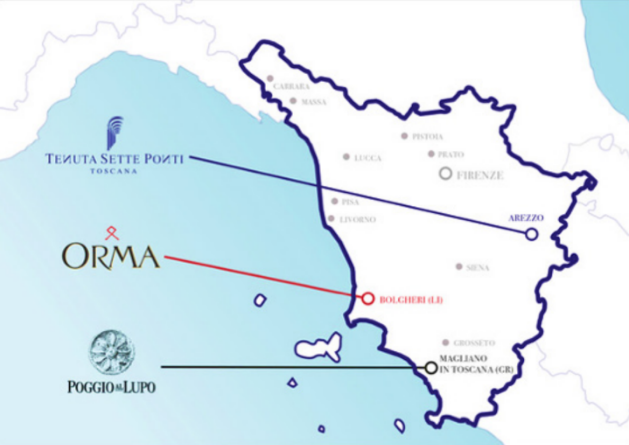
Following our first successful virtual tasting hosted by Caterina Sartarelli and Peter McCombie MW in July, on Tuesday 17th August C&C Wines hosted its second monthly featured producer tasting. In August, this featured one of our key Italian agencies – leading Tuscan producer Tenuta Sette Ponti, whose wines are some of the highest awarded and revered from the region. Hosted by C&C Wines’ Master of Wine Peter McCombie and Tenuta Sette Ponti’s Export Manager, Natascia di Marco, attendees were guided through an introduction to three of Tenuta Sette Ponti’s estates – Tenuta Sette Ponti, Orma and Poggio al Lupo – before tasting through the core wines from each.
Before discussing the individual estates, Peter McCombie set the scene by highlighting the ambition of their owner, Dr. Antonio Moretti, who took over the estate (Tenuta Sette Ponti itself) first purchased by his father Alberto in the 1950s. He noted that at this time Valdarno was not especially well-known, and excluding Ornellaia, there were not any local pioneers in the region. Their wines have in fact remained reasonably under the radar in the UK in spite of making a splash in Italy and gaining impressive scores from several critics. For example, recent accolades include Gambero Rosso’s Winery of the Year in 2015, multiple 95+ point scores and several “Top 10 Wines in the World” by publications from around the world.
Natascia followed this by giving attendees an overview of the Moretti family-owned estate group, namely:
- It is the product of three generations of winemaking, which began in the 1950s with Tenuta Sette Ponti, with only 15 hectares of vineyards
- They now have 150 hectares of vineyards planted in total
- The group consists of five unique estates in the iconic production regions of Tuscany (these three estates) and Sicily
- All estates are converting to organic viticulture
- They are one of the fastest growing producers in the premium sector and are now present in 50 countries
Tenuta Sette Ponti – The Story
The Tenuta Sette Ponti estate covers an area of 300 hectares, of which 60 are planted with vineyards. The name “Sette Ponti”, is a reference to the seven bridges on the road between Florence and Arezzo, the most famous of which is the Buriano bridge, flanked by the estate. The bridge, built between 1240 and 1277, can be seen in the backgrounds of two masterpieces by Leonardo da Vinci: the Mona Lisa and Madonna of the Yarnwinder.
The estate has been one of the properties of the Moretti Cuseri family since the 1950s, when Alberto Moretti Cuseri bought the first 60 hectares directly from the princesses Margherita and Maria Cristina of Savoia d’Aosta. However, it is really the vision of Alberto’s son, Dr. Antonio Moretti, who after taking over the estate from his father in the late 1990’s recognised the estate’s exceptional terroir and decided to produce estate-bottled wines.
The estate itself, in Valdarno in the heart of Tuscany, covers an area at the foot of the mountain where the vineyards can be found. Vines occupy 50 hectares, ranging in altitude from 200 to 300 metres, with the oldest vines (mostly Sangiovese) dating back to 1935. The soil is a classic Tuscan mix of sand, clay, limestone and schist-based galestro.
As Natascia highlighted, the estate’s exceptionally concentrated wines and high-quality fruit are a result of very high density planting with low-yielding vines. She explained to demonstrate this that their vines are planted at a density of 6666 per hectare, yet their yields are only 1kg per vine. In contrast, in the case of Chianti, planting density is lower at 4500 vines per hectare yet yields are higher at 2.5kg per vine.
Natascia explained on a personal note that when she joined the estate, she was incredibly impressed by the exceptionally high standards and focus on only the best quality of all of the team. The estate, along with Antonio Moretti’s others has thrived under the winemaking expertise of Giuseppe Caviola, and Antonio personally supervises the process, to provide his own personal imprint on the wines.
This October, the estate celebrates the 20th anniversary of its flagship wine, Oreno, with the release of the 2019 vintage. Oreno, which was first released in 1999, was born out of Dr. Antonio Moretti Cuseri’s desire to start planting Bordeaux varieties in the estate, struck by their elegance and finesse during his frequent travels.
Relying on the renowned nurseryman Gilbert Bouvet, he decided to graft adult vineyards with Merlot, Cabernet Sauvignon and Petit Verdot, which are well adaptable to the Tuscan territory. The name comes from a stream which crosses the estate, in the clay-rich area where their Merlot vines grow. In the soils with a greater presence of pebbles, which provides excellent drainage and regulates temperature and humidity, Cabernet Sauvignon finds its natural collocation. The perfect complement to the blend is Petit Verdot, traditionally used to contribute spicy notes and intensity of flavour. The creation of a wine inspired by the Bordeaux style but with a strong Tuscan imprint was thus created.
Excitingly, the forthcoming 2019 has already received a rare 99 points from James Suckling, and we expect exceptional scores across the board.
Tenuta Sette Ponti – The Tasting

We began the tasting with Crognolo, the estate’s second wine and one of its highest sellers, which is a 90% Sangiovese / 10% Merlot blend, before moving onto two separate vintages of Oreno, the consistently award-winning Super Tuscan blend of Merlot (50%), Cabernet Sauvignon (40%) and Petit Verdot (10%) that is Tenuta Sette Ponti’s flagship wine.
Tenuta Sette Ponti Crognolo Toscana IGT 2018
Aged in small used oak barrels for 12-14 months before a further 6 months in bottle, the base Sangiovese in this bottling was made from a clone of vines dating back to the 1930s, and its vineyards are based in the galestro-rich areas of the estate. It has a classical Sangiovese nose with herbs, cold tea and sweet spice. The fruits are indisputably red in character, and even with the touch of international Merlot it is classically Tuscan. On the palate it is firm and dry, with a pleasing balance of richness. Still youthful in character, but its slight edges will smooth out over time. It is highly approachable and has enough ease to drink by itself now, but will definitely reward keeping a little longer.
Tenuta Sette Ponti Oreno Toscana IGT 2018
The vines for this exquisite wine are kept under close supervision, with each stalk allowed to produce only one or two clusters of grapes to ensure the highest quality of grapes. Oreno is produced from grapes grown on calcareous and clay-rich soils, which are handpicked, hand sorted and destemmed. Fermentation takes place over 25 days including maceration, before ageing for 14-18 months in new French oak barriques, and the wines are blended twice. This 2018 is entirely different in style and aromatics than the Crognolo – on the nose it is richer and more chocolatey, with blacker fruits and a hedgerow character with hints of leafiness. There is a pleasing wild character to it, which Peter assessed is a result of the Petit Verdot in the blend. In Peter’s words, “there is richness and power but it’s equally sleek and smooth. It’s ripe, but incredibly fresh with a long finish”.
Tenuta Sette Ponti Oreno Toscana IGT 2009
There is definitely some evolution of colour evident, along with a clear evolution of aromas on the nose. Subtle floral perfume, Irish moss and liquorice feature on the nose, with very little primary fruit, as can be expected. Evolving flavours of savoury and autumnal bonfires on the smooth palate. Tannins are resolved and fine, and the finish is long. *
Orma – The Story
Purchased in 2004 by Tenuta Sette Ponti owner, Dr. Antonio Moretti, Orma, translating as ‘footprint’ in Italian, is a 5.5 hectare estate that is nestled in Bolgheri, coastal Tuscany’s outstanding wine region, between two illustrious neighbours, Sassacaia and Ornellaia. Bolgheri has long boasted an impressive reputation worldwide, earning its prestige as one of the most impressive and creative production areas in the world of wine, noted for its experimentation with innovative blends of Cabernet Sauvignon and Merlot. Natascia explained that the region benefits from an unusual alchemy of its soils and climate, which is moderated by the Mediterranean climate throughout the year.
Orma IGT’s debut vintage in 2005 received the stellar reviews its privileged location demands and today, Orma is recognised alongside Bolgheri’s finest wines. Indeed, as Natascia highlights its reputation is a clear rival to Oreno’s and it is a consistently high-scoring Super Tuscan which has been described by James Suckling as “a challenger to Sassicaia and Ornellaia.” The blend is a rounded and complex blend of Merlot (50%), Cabernet Sauvignon (30%) and Cabernet Franc (20%).
The estate itself is located in the district of Castagneto Carducci within the Bolgheri DOC. Southwest-facing, the vineyard is planted in deep soils with abundant pebble and clay content with little sand, an exceptional environment for the plantings of Merlot, Cabernet Sauvignon, and Cabernet Franc to produce richly defined and concentrated wines.
Orma – The Tasting
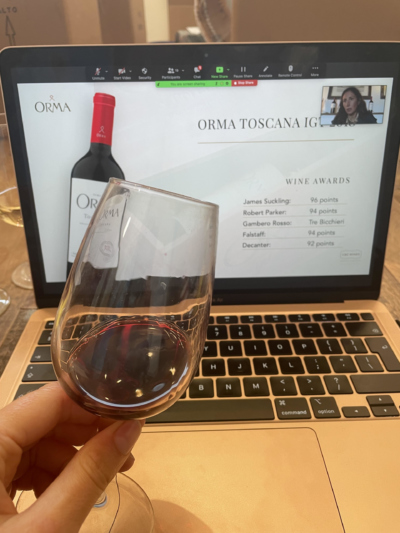
Peter noted that 2018 was a lighter, cooler year than other years in Bolgheri, which may appeal to those who find many Super Tuscans too heavy. There is a real aromatic freshness on the nose, with evident Cabernet Franc notes, pepper and subtle notes of baking spice. In comparison with the 2018 Oreno, this has a slightly sweeter flavour profile, with riper yet fine tannins, and is more weighty, dense and textured. However, the 15% alcohol level is incredibly well integrated.
The structure is the same as the 2018 in terms of its varietal components and alcohol content, but it is showing more evolution in colour. This has more substance and weight than the 2009 Oreno, with some primary fruit still evident. The palate is slightly more evolved than the nose suggests, though this may be due to the slightly higher alcohol. When considered in comparison with Oreno, Peter highlighted that the more floral characteristic of Orma may be attributed to the Cabernet Franc in the blend, with the powerful black fruit in Oreno in part due to its Petit Verdot component.
Poggio al Lupo – The Story
Founded in 1999 by Antonio Moretti, Poggio al Lupo, which translates as ‘Wolf’s Knoll’, is based in Maremma, located on the west coast of Italy, almost directly south of Florence. The vineyards lie on top of rich clay, sandstone and marly limestone soils, stretching across the Magliano hills. The latter provide varying south facing altitudes (100 – 330 metres above sea level) for their Sangiovese, Cabernet Sauvignon and Vermentino vines.
Of the estate’s 15 planted hectares, Vermentino vines cover around 7 hectares, at a lower and cooler height of around 100 metres above sea level, where the soil is richer in minerals and limestone producing a fresh and mineral-flavoured wine.
Poggio al Lupo – The Tasting

Poggio al Lupo Vermentino Toscana IGT 2019
Fermentation took place in small stainless steel vats at a controlled temperature for at least 15 days, after which the wine was rested in stainless steel tanks. The nose is fresh, with a savoury citrus note (mostly grapefruit), which opens up into subtle floral spice, before candied lime and homemade lemonade. The palate is fresh and zippy, with lively acidity, and a lovely texture. In the time that Peter’s wine had been poured, he noted that it had really come out of itself, taking on a Semillon/white Bordeaux character with a touch of wax. This is a delicious summery white and a more serious wine than it might suggest.
You can watch our full recording of the live session and tasting below.
Please contact us for pricing and availability.
*Sadly one of the samples that was bottled for tasting on this occasion was oxidised, however subsequent bottles have been tasted and are in all excellent condition.

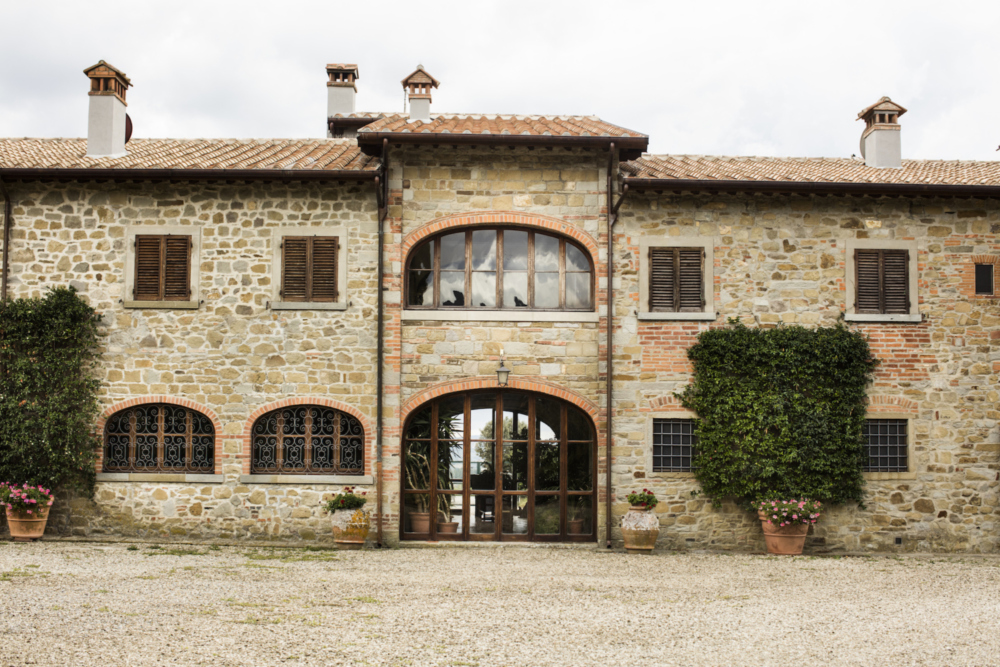

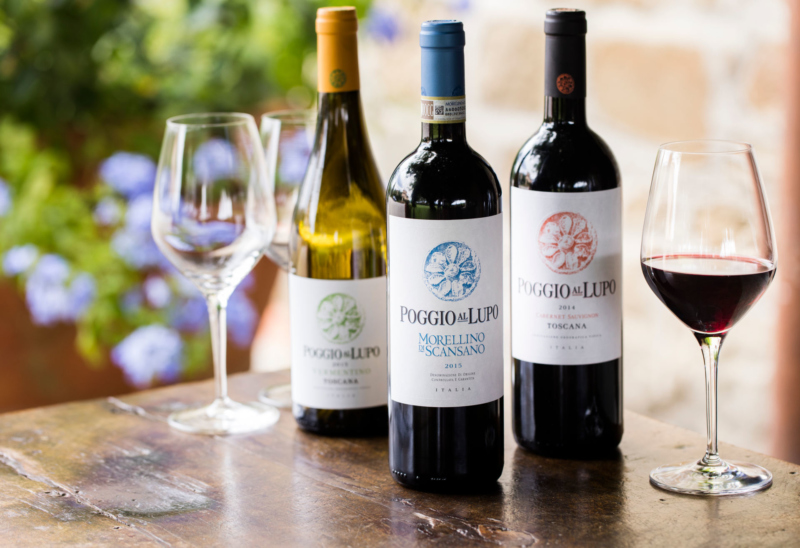

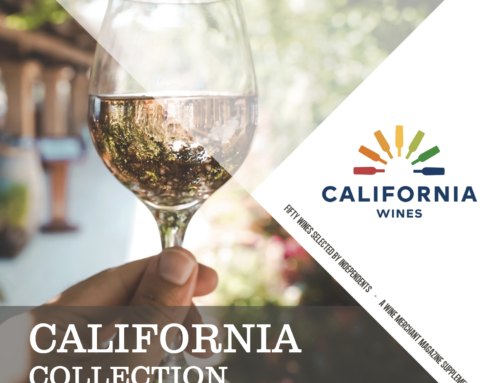
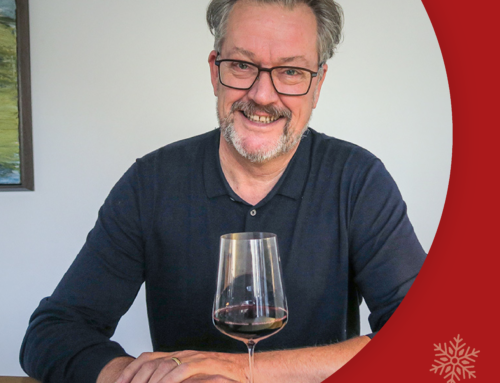
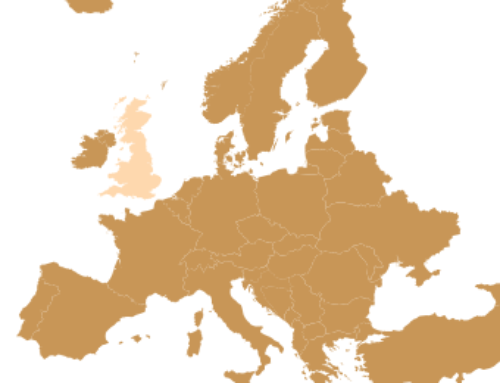
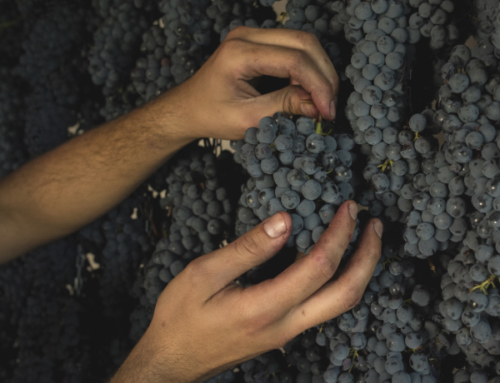
Leave A Comment